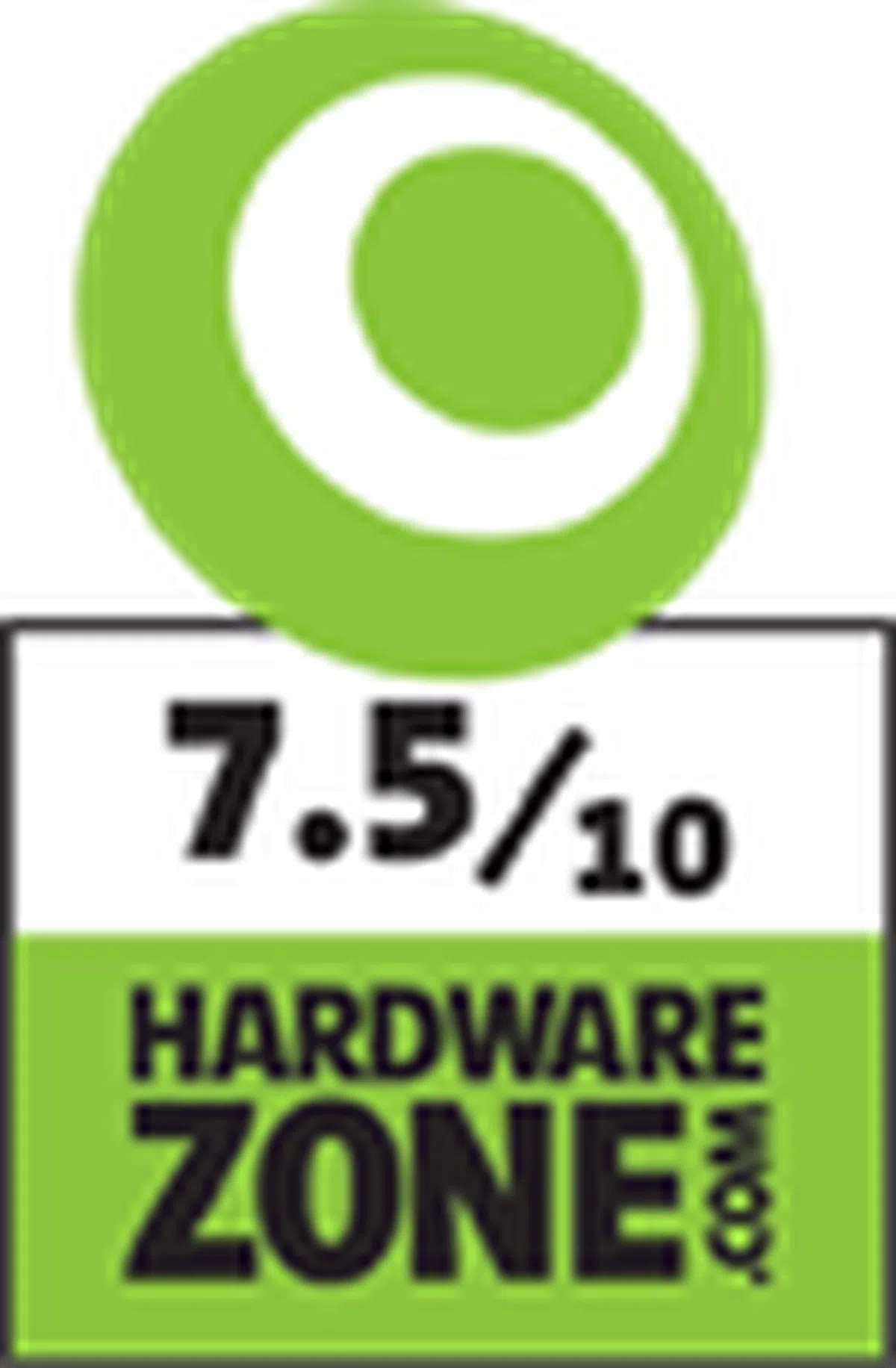The Great Gaming Notebook Shootout of 2013
Thanks to advances in CPU and GPU technology, gaming notebooks have never been more powerful. We pit the best of the best from Aftershock, ASUS, Dell, MSI, Razer and Toshiba against each other in a battle to the death to find out which is best.
By Kenny Yeo -
The Great Gaming Notebook Shootout
While gaming is generally thought of as a desktop activity, there are those who swear by the portability of a notebook. While it is true that the most powerful of high-end gaming notebooks are generally bulky and cumbersome machines, notebooks are still infinitely more convenient to transport when compared to desktop systems. In this respect, they are perfect for gamers who value some sort of mobility but do not want to sacrifice on performance.
And thanks to advances in both CPU and GPU technology, gaming notebooks have never been more powerful, and they are slowly but surely closing the performance gap between it and desktop gaming systems. The new fourth generation Core processors from Intel offer greater performance and better power efficiency, while NVIDIA’s latest GeForce GTX 700-series, the GPU of choice for most notebook makers these days, are excellent performers.

Is this the gaming notebook tower of power or the powerful tower of gaming notebooks?
There is currently no shortage of high performance gaming notebooks, as just about every major notebook manufacturer has something to offer. For this shootout, we will be evaluating the flagship gaming notebooks from the individual brands that are available locally. To make the cut, the notebook must have a display that is 17-inches or larger, the latest processing platform, an enthusiast-grade GPU (GeForce GTX 765M and above) and it must be launched this year. Here’s the list of candidates:-
- Aftershock Titan
- ASUS G750JX
- Dell Alienware 18
- MSI GT70 Dragon Edition 2
- Razer Blade Pro
- Toshiba Qosmio X70
Aftershock Titan

The Titan comes from local custom notebook specialists Aftershock.
Processor: Intel Core i7-4700MQ (2.4GHz)
Memory: 16GB
Graphics: NVIDIA GeForce GTX 780M x 2 (SLI) 4GB GDDR5
Storage: 256GB SSD + 1TB HDD
Aftershock is a Singapore-based custom notebook specialist which has been making a name for themselves amongst gamers locally. We recently reviewed the XG13, their 13-inch portable gaming notebook, and found it to offer tremendous performance for the money.
If the XG13 is the baby in Aftershock’s lineup, then the Titan can be described as the All-Father. This is their flagship gaming notebook and it is a beast of a machine both figuratively and literally, as, specifications aside, the Titan is a just under 50mm thick and weighs a considerable 3.9kg. However, once you consider its hardware arsenal, the notebook's weight is more justifiable.
The 17.3-inch Full-HD display utilizes a TN panel and viewing angles are pretty respectable and visuals are decently sharp and crisp, but a little washed out on the brighter settings.

The Titan has a lot of ports and jacks. On the left we find an Ethernet jack, memory card reader, headphones, microphone, line-in and S/PDIF output.

On the right, there's a Super Multi DVD drive, eSATA port, two USB 3.0 ports and a Thunderbolt port.

Towards the rear, in between the two exhaust vents are two more USB 3.0 ports, a HDMI port and the DC-in jack.
The notebook also boasts as impressive list of features such as Killer network connectivity (Ethernet and wireless), Creative X-Fi audio engine, Mini-Displayport video output, and even a Thunderbolt port.
So far so good, but the Titan disappoints when it comes to design and build quality. As it is, the Titan design can best be described as uninspired. It looks really generic and there is no real theme to its overall look, some surfaces are plain plastic whereas others are rubberized and the keyboard panel is brushed aluminum. It feels and looks haphazard to us. Fortunately, the Titan is solidly built and there is no noticeable flex in the chassis.
The keyboard also feels a bit squashed and claustrophobic to use, which should not be the case in a large desktop-replacement class notebook. And to add, the trackpad has a tacky plastic feel and was not smooth to glide over and use, even if it was accurate and responsive enough.
Another underwhelming aspect of the Titan are its Onkyo-branded speakers, which though loud, sounded flat and was lacking in body. Fortunately, the aspects where it doesn't rank well, they are easily overcome by gamers using their own preferred gaming mouse, headset or speakers - personal preferences and gear that will undoubtedly be preferred by most users to augment their gaming experience. As such, they are not critical flaws for Aftershock (even though we wish they were improved upon anyway).
ASUS G750JX

The ASUS G750JX comes from the company's Republic of Gamers line-up.
Processor: Intel Core i7-4700HQ (2.4GHz)
Memory: 8GB
Graphics: NVIDIA GeForce GTX 770M 3GB GDDR5
Storage: 750GB HDD (5400rpm)
ASUS’s entry comes from the company’s Republic of Gamers (ROG) line-up and it is called the G750JX. Uninspiring name aside, the G750JX has arguably the most unique design. Round the back, the exhaust vents have been designed to look like the rear of a Lamborghini Aventador, which ASUS claims improves ventilation and cooling.

The rear exhaust vents reminds us of the Lamborghini Aventador.
The chassis itself is constructed using mixture of plastics and aluminum and, as you would expect of a product from one of the world’s top manufacturers, is solidly put together. In terms of dimensions and weight, the notebook is around 50mm thick and tips the scales at 4.8kg, making it the second heaviest notebook in our shootout.
The G750JX’s 17.3-inch full HD matte display uses a TN panel, but offers good all round viewing angles and images are pretty bright and crisp.

On the left are two USB 3.0 ports, a Super Multi DVD drive and a memory card reader.

On the right, there's two more USB 3.0 ports, a Thunderbolt port, HDMI and VGA video outputs, an Ethernet jack, headphones and microphone jacks.
As for features, the G750JX is one of only two notebooks in this shootout to offer a Thunderbolt port, which doubles up as a Mini-DisplayPort. It also has an in-built headphone amp, an unusual feature for any notebook, which can drive high impedance headphones of up to 600 Ohms.
Its keyboard was also amongst the best as the keys are large and clearly defined. We especially liked how ASUS has isolated the cursor keys, which can be useful for certain games. The trackpad is large and accurate to use, but it is not clickable. Instead, it relies on two separate buttons below, which we found to be a bit too mushy for our liking.
Finally, despite boasting ASUS’ SonicMaster audio technology, which we found to be effective in older ASUS’ products such as the ET2300INTI AIO, we found the G750JX to sound a bit too weak and tinny for our liking.
Dell Alienware 18

The Dell Alienware 18 is an absolute hulk, tipping the scales at a whopping 5.6kg and measuring almost 60mm in thickness.
Processor: Intel Core i7-4900MQ (2.8GHz)
Memory: 16GB
Graphics: NVIDIA GeForce GTX 780M x 2 (SLI) 4GB GDDR5
Storage: 750GB HDD (7200rpm) + 80GB SSD cache
The Dell Alienware 18 is by far the largest and bulkiest notebook in the shootout, coming in at slightly over 57mm thick and weighing a titanic 5.6kg. Dell has also gone to great lengths to ensure that plastics are kept to a minimum. The front lid is aluminum, whereas the rest of the chassis has been given a slightly rubberized finishing, which gives the entire notebook a very matte and stealthy look. It is also the only other notebook (apart from the Razer Blade Pro) to not have a removable battery. A removable battery can help reduce some weight if you know you are going to somewhere with power.
While that might appearing boring to some, know that Dell has stealthy decorated the Alienware 18 with LED lights around the chassis. They are not apparent when the notebook is shutdown, but once it powers up, the notebook takes on a more aggressive and 'gamer' type of look. Furthermore, these LED lights are categorized into zones and they are entirely customizable, so users can switch colors to suit their preference and mood.
As its name suggests, the Alienware 18 features a 18.4-inch display - the largest here - and uses an IPS panel. It goes without saying then that amongst the others notebooks, it offers the best viewing angles and visual quality.

On the left, there's both HDMI and Mini-DisplayPort video outputs, two USB 3.0 ports, headphones and microphone jacks and a line-in port.

On the right is a slot-in Super Multi DVD Drive, memory card reader, two more USB 3.0 ports and an Ethernet jack.
Given its bulky dimensions, its not surprising to find that Alienware 18 is not short on features. Though it does not have a Thunderbolt port, it is the only notebook in this shootout to support Wireless 802.11ac connectivity. In addition, it has a Mini-DisplayPort for easy video output to high resolution (above 1080p) external displays and Killer Ethernet connectivity. It is also the only notebook with a hard disk drive that has its performance augmented by a smaller 80GB flash drive, which acts as a cache for quick boot-ups and frequently used applications.

The Alienware 18 keyboard features macro keys, but the position could be better as we found ourselves inadvertently hitting it instead of Control.
Unusually, Dell has opted for more a more traditional style keyboard instead of the now popular chiclet-style keys, and the Alienware 18 also features 10 dedicated macro keys. The position of these macro keys need to be revised however, as we found ourselves hitting the fifth macro key by mistake whenever we wanted to hit the Control key. The trackpad is also not clickable, but then it is the only one that features backlights on a trackpad, and that is really cool.
In terms of audio performance, we found the Alienware 18 to be really loud. The volume can be easily raised to the near maximum without any significant signs of hissing or cracking. Bass is also surprisingly punchy for a notebook.
MSI GT70 Dragon Edition 2

The MSI GT70 Dragon Edition 2 is the flagship of MSI's G-series of gaming notebooks.
Processor: Intel Core i7-4700MQ (2.4GHz)
Memory: 8GB
Graphics: NVIDIA GeForce GTX 780 4GB GDDR5
Storage: 750GB HDD
In our review of the MSI GS70 Stealth, we mentioned that MSI has recently refreshed their entire G-series lineup and that their latest offerings have stepped it up a notch in terms of value and build quality. This was clear in the MSI GS70 Stealth, which has an all-aluminum chassis and was actually quite attractive.
These improvements in build quality has been brought over to the MSI GT70 Dragon Edition 2 too. Although the notebook is built using a combination of plastics and aluminum, it feels and looks well put together, worthy of a flagship product. The front lid is bright red brushed aluminum as is the palm rest area, which is very striking. Equally eye-catching are the dragon motifs on the aluminum panels, which might not be everyone’s tastes.
As for dimensions and weight, the GT70 Dragon Edition 2 comes in as one of the bulkier and heavier notebooks, with a thickness of around 55mm and a weight that approaches 4kg - 3.9kg to be exact.
The 17.3-inch Full-HD display uses a TN panel and viewing angles are actually pretty decent for what it is.

On the left are three USB 3.0 ports, memory card reader, and various audio jacks - headphones, microphone, line-in and line-out.

On the right are two USB 2.0 ports and a Super Multi DVD drive.

The Ethernet jack is located behind as are the VGA, Mini-DisplayPort and HDMI port.
As a G-series notebook, the GT70 Dragon Edition 2 is choke full of useful and nifty features. For example, a row of touch-sensitive buttons above the keyboard activate functions such as "airplane mode" and a turbo fan mode that ramps the notebook’s cooling fans to maximum speed for no-compromise gaming if you're into tweaking or in a gaming competition (such as the MSI Beat It tournament that used the GT70 Dragon Edition 2). It is also one of the few notebooks to have a Mini-DisplayPort. And finally, it features Killer network connectivity for Ethernet and wireless connections.

Above the keyboard are these touch-sensitive buttons which enables functions like airplane mode.
The trackpad is of a good size and is accurate to use. The SteelSeries keyboard is a bit odd in terms of layout because the "Windows" key has been relocated to the right. MSI says this is because gamers often hit it unintentionally during games. The keys themselves are large and are tactile to use. Additionally, the keyboard features anti-ghosting technology and customizable backlights, which we think its cool.
The Dynaudio speakers provide plenty of oomph and are quite bassy (relatively speaking of course), are loud and give vocals a light, airy quality. Overall, the GT70 Dragon Edition 2’s audio performance ranks amongst the best we have heard from a notebook.
Razer Blade Pro

The Razer Blade Pro is the slimmest and lightest notebook in our shootout.
Processor: Intel Core i7-4700HQ (2.4GHz)
Memory: 8GB
Graphics: NVIDIA GeForce GTX 765M 2GB GDDR5
Storage: 256GB SSD
The Razer Blade Pro features an all-aluminum chassis, decked completely in black, save for the bright green Razer logo emblazoned on its lid, and is by far, the slimmest, lightest and also arguably the sexiest looking notebook in this shootout. It measures just about 22mm thick and was the only notebook to weigh under 3kg - 2.98kg to be exact.
However, to achieve its slim and svelte dimensions, Razer has had to sacrifice on performance as the Blade Pro packs 'only' a GeForce GTX 765M GPU. To put this into perspective, the GeForce GTX 765M GPU has 768 CUDA cores, 192 lesser than the GeForce GTX 770M and only half that of the top of the range GeForce GTX 780M, which has 1536 CUDA cores.

The SwitchBlade UI is cool, funky and actually pretty useful once you get the hang of it.
However, it makes up for that with features that will appeal to gamers such as Killer wireless network connectivity and its signature SwitchBlade UI interface. The SwitchBlade UI is a highly customizable interface consisting of ten keys and a 4.05-inch LCD screen which doubles as a touchpad. With it, users can quickly check Facebook, Twitter or even their emails without leaving their game. It can even double up as a clock and a chronograph, useful for RTS games. For more details, check out .

All the ports are located on the left, apart from an Ethernet port and HDMI output, there's also three USB 3.0 ports and an audio combo jack.
The keyboard feature anti-ghosting technology and is really nice to use, even offering a slight "click" sound when you type. However, it could use with a bit more travel to improve tactility.
Finally, much like the other notebooks in this shootout, the Blade Pro uses a 17.3-inch Full HD TN-type display. However, compared to the other notebooks, we found that its display looks a bit less crisp and washed out, especially on higher brightness levels.
Toshiba Qosmio X70

The Toshiba Qosmio X70 is the Japanese hardware giant's flagship gaming notebook.
Processor: Intel Core i7-4700MQ (2.4GHz)
Memory: 12GB
Graphics: NVIDIA GeForce GTX 770M 3GB GDDR5
Storage: 256GB SSD + 1TB HDD
Despite the 44mm thickness, the Qosmio X70 from Toshiba is actually the second slimmest notebook in our shootout - after the Razer Blade Pro. It is also one of the 'lighter' ones, tipping the scales at 3.5kg. This makes it one of the more portable gaming notebooks.
The Qosmio X70 is a well-built machine with an all-aluminum chassis that feels very solidly put together. It also looks pretty attractive thanks to the metallic red accents that decorate the notebook. And for added visual pizzazz and to resist fingerprints, certain parts of the chassis such as the front lid and palm rests have been given a textured and dotted finish.

We really like the feeling of the Toshiba's keys. Note also the textured surface on the palm rest.
The keyboard and touchpad are almost faultless. The chiclet-style keys are large and have a certain 'bounce' to them, offering great tactility. The layout was also sensible, so we did not have trouble touch-typing from the get-go. As for the clickable touchpad, it was large, responsive and accurate to use.

On the left, we find an Ethernet port, two USB 3.0 ports and a Blu-ray drive.

On the right are your standard headphones and microphone audio jacks, two more USB 3.0 ports and HDMI and VGA outputs.
In terms of features, the Qosmio X70 was the only notebook to come with Blu-ray rewritable drive, which should appeal to movie buffs or anyone who needs to write and store large amounts of data on Blu-ray discs. Sadly, it did not have some of the other features found on its competitors such as Killer network connectivity, Thunderbolt nor DisplayPort outputs, though it does have four USB 3.0 ports.
To complement the notebook’s movie buff credentials, the 17-inch TN panel display, which features Toshiba’s Clear Super View technology looks vivid and bright, and offers good viewing angles. Additionally, the Harmon Kardon-designed speakers are surprisingly loud and clear, and have good stereo separation. Vocals and strings, in particular, sounded warm and pleasant. Bass, however, could do with more punch and impact, but that can be said for just about every notebook. All in all, the Qosmio’s audio showing definitely ranks amongst the best we have heard from notebooks.
Performance Benchmarking
To evaluate the notebooks, we will be putting it through our revised suite of tests and benchmarks. Raw performance aside, we will also be evaluating how warm the notebooks run, by taking readings from GPU-Z as well as using an infrared thermometer. The full list of benchmarks used are as follows:
- PCMark 8
- 3DMark 2013
- Crysis 2
- Tomb Raider
[hwzcompare]
[products=432941,432947,432935,432945,408168,432929]
[width=155]
[caption=Test Notebooks Compared]
[showprices=0]
[/hwzcompare]
PCMark 8
On PCMark 8, the Aftershock Titan and Dell Alienware 18 were our most consistent performers, with the Titan being the better performing of the two thanks to its superior scores on both the Microsoft Office and Adobe application workloads. This can be attributed to the Titan’s beefy Core i7 processor, generous 16GB of RAM, dual GeForce GTX 780M GPUs and speedy flash drive. Interestingly, a number of the workloads really depend on storage performance and you can see that along with Aftershock, Razer and Toshiba fare really well too. Speaking of which, on the "Storage" workloads, the low scores of the ASUS G750JX and MSI GT70 Dragon Edition 2 can be attributed to their hard disk drives - the Alienware 18 has a hybrid drive whereas the others have flash drives.

3DMark 2013
Unsurprisingly, it was the Aftershock Titan and Dell Alienware 18 that were the top performers on 3DMark 2013. However, it must be noted that on "Cloud Gate", the Titan’s scores were around 5% better; while on "Fire Storm" its lead was even greater at around 17% - despite the fact that both notebooks sport the same GPU configuration and that the Dell has a much more speedier CPU (which unfortunately didn't help much). Rounding up the pack was the Razer Blade Pro, which has the weakest GPU.

Crysis 2
On Crysis 2, the Aftershock Titan was the undisputed top performer, breaking 100 fps on "Very High" and achieving an impressive 80 fps on the "Ultra" game quality setting. Strangely, despite having the exact GPU configuration as the Titan, the Dell Alienware 18 failed to keep up, recording around 64 and 63 fps on "Very High" and "Ultra" respectively. Furthermore, 64 fps on "Very High" is just about the same as the MSI GT70 Dragon Edition 2, which has a single GeForce GTX 780M. Clearly, the SLI configuration on the Alienware 18 seems to have some trouble coping with this benchmark. This result is consistent despite our troubleshooting and calling in another set to retest.
The MSI GT70 Dragon Edition 2 comes closest to our two dual GPU monsters, while behind it, was the duo of ASUS G750JX and Toshiba Qosmio X70, both of which are powered by the less powerful GeForce GTX 770M. Rounding up was, once again, the Razer Blade Pro.

Tomb Raider
The Aftershock Titan was again the top performer on Tomb Raider, recording 261 fps on "Normal” and 186 fps on "High". With these high performance scores, you could easily run multi-monitor gaming off the Aftershock Titan in your home setup. The results were easily double that of the Alienware 18, which has the same dual GPU configuration as the Titan. Evidently, the Alienware 18’s SLI configuration is not as efficient and effective in Dell's implementation.
The MSI GT70 Dragon Edition followed closely after the Alienware 18 despite having just a single GeForce GTX 780M, and to be honest, its scores were not that far off from the Alienware 18. The ASUS G750JX and Toshiba Qosmio X70 both have the same GeForce GTX 770M, but the ASUS benefits from a higher score at the game's "Normal" quality setting.

Temperature
The cooling efficiency of a notebook’s thermal management system is more important than ever, now that the new GeForce GTX 700 series mobile GPUs feature NVIDIA’s GPU Boost 2.0 technology. GPU Boost 2.0 takes temperature into account as well as available power when overclocking the GPU. You can .
Looking at the results, it became apparent why the Dell Alienware 18’s performance was underwhelming. Using GPU-Z, we recorded a maximum GPU temperature of 87 degrees Celsius, which was by far the highest. Using an infrared thermometer, we also found out that top left surface of the notebook was a scorching hot 50 degrees Celsius - not safe to touch. The Aftershock Titan, which has a similar GPU configuration, runs markedly cooler, which provided the GPUs with more overclocking headroom.
The coolest notebook was ASUS G750JX, which recorded a maximum temperature of just 70 degrees Celsius on GPU-Z. Its large rear exhaust vents also meant that the areas accessible by users are kept cool, as can be seen by its relatively low notebook surface temperatures.

Battery Life & Power Consumption
Given their high-end processors, power sapping GPUs and large display, we were not expecting to get much mileage out of these machines, but some of them did impress us. The ASUS G750JX managed an impressive 3 hours and 42 minutes, the longest in this shootout. For that, it has its large 88Wh battery and well optimized power consumption to thank. The MSI GT70 Dragon Edition 2 and Razer Blade Pro deserve special mentions too for lasting over two and a half hours.
On the other end of spectrum, we have the Toshiba Qosmio X70 and Dell Alienware 18, which lasted 71 and 91 minutes respectively. However, the Qosmio X70 only lasted that long because of its puny battery which has a capacity of just 47Wh - the least by far.
If we were to look at power consumption figures, which is a better representation of a system’s efficiency, we can see that the Qosmio’s figure of 39.72W is actually somewhat on the high side. The two dual-GPU monsters from Aftershock and Dell both exceeded 50W. We can also see that the ASUS’ low power consumption of just 23.78W helped contribute to its long battery life.


Portability Index
Our Portability Index factors in battery life, weight and volume so you can see which notebook is the most worthwhile to carry around. Needless to say, these huge gaming notebooks did not fare too well in this segment, with most scoring dismally. Just for reference, the latest MacBook Air achieved a score of 4.76.
Expectedly, the Dell Alienware 18 scored the lowest - 0.034 - given its poor battery life and hulking dimensions and weight. At well over 5kg (perhaps even past 6kg if you consider its accompanying power brick), it feels significantly heavier than the other notebooks and is one that we would not recommend carrying around for any extended periods of time; in fact it's not even mobile friendly to consider moving it about. On the other end of the spectrum, with its slim dimensions and light weight (comparatively speaking), the Razer Blade Pro was unsurprisingly the most portable.
In terms of ease of carrying around, we felt that the Toshiba Qosmio X70, and to a lesser extent, the Aftershock Titan and MSI GT70 Dragon Edition 2, which are all under 4kg in weight, were still somewhat portable.

Best of the Best
We were pretty surprised with the current crop of high-end gaming notebooks. Not only have they proven themselves to be powerful machines, more than capable of running today’s games at decent to high settings; they have also shrank considerably in both size and weight (well, most of them anyway).
Since these notebooks have differing specifications and varied feature sets, it was a little tricky to make meaningful comparisons between them. However, after much deliberation, we have decided that performance should be the foremost consideration. These are after all high-end gaming notebooks that users buy to play the latest games, and they should expect no compromises in terms of performance. To further elaborate, performance would take into account other aspects such as audio performance, the quality of the display and also general usage experience.
Next on the list is features, and this takes into consideration things such as Killer network connectivity, number of USB 3.0 ports, any cool features such as customizable lighting or macro keys. These two - performance and features - are our key comparisons. Rounding up our comparisons are design, mobility and finally, value.
Additional Findings - Heat vs. Performance
As we tested these notebooks, we also noticed that there is a correlation between performance and temperature.
One of the new technologies to be introduced by NVIDIA is in recent times is GPU Boost, which dynamically adjusts clock speeds depending on certain parameters. The latest iteration of this technology - GPU Boost 2.0 - takes into account GPU temperatures as well as available power. This means the cooler the notebook runs, the more likely there is headroom for the GPU to overclock, resulting in better performance.
This is most evident when you compare the performance between the Aftershock Titan and Dell Alienware 18. On both Crysis and Tomb Raider, the Dell Alienware 18’s scores were dismally poor when compared to the Aftershock Titan.
We also noticed the same phenomenon on Tomb Raider when comparing results between the ASUS G750JX and Toshiba Qosmio X70. Since both have the same GeForce GTX 770M GPU, we expected comparable scores, but the ASUS performed noticeably better on the "Normal" game quality setting.
Cooling efficiency should therefore be an important consideration for both notebook manufacturers and consumers.
Analysis and Results
Before we provide our individual analysis on each of the notebooks, here is a quick look at the final scores. Take note that it has been a while since we reviewed the Razer Blade Pro and the scores we've given it previously are valid a standalone review. However, when considering other contenders in this gaming notebook shootout, we've decided to adjust some of its ratings to better fit the entire comparison.
Aftershock Titan | ASUSG750JX | Dell Alienware 18 | MSIGT70 Dragon Edition 2 | Razer Blade Pro | Toshiba Qosmio X70 | |
Design | 7.0 | 8.0 | 7.5 | 8.0 | 9.0
(adjusted up from 8.5) | 8.5 |
Features | 9.0 | 8.0 | 8.5 | 8.5 | 8.0 | 7.5 |
Performance | 9.0 | 7.0 | 8.0 | 8.0 | 7.5
(adjusted from 8.5) | 8.0 |
Value | 8.5 | 8.5 | 6.0 | 8.0 | 6.5 | 8.5 |
Mobility | 7.0 | 7.5 | 3.0 | 7.0 | 9.0
(adjusted up from 8) | 8.0 |
Price | $4159 | $2198 | $5099 | $3299 | $3599 | $2999 |
Overall | 8.5 | 7.5 | 7.5 | 8.0 | 7.5
(adjusted down from 8.0) | 8.0 |
Aftershock Titan (Winner)

For its blazing fast performance and rich list of features, the Aftershock Titan was crowned the winner.
The Aftershock Titan offers performance by the bucketload and was easily the fastest and best-performing notebook in this category. Its dual GeForce GTX 780M GPUs allowed it to coast through our gaming benchmarks, and its formidable Core i7-4700MQ processor and speedy Samsung SSD 840 Evo drive contributed to its strong general computing scores. Its performance was consistent too, unlike the Dell Alienware 18, and is good enough to consider a multi-monitor gaming setup. The Titan certainly lives up to it name where it counts.
It is also very well equipped, sporting four USB 3.0 ports and is one of the few notebooks to have a discrete audio chip, courtesy of the Creative X-Fi Xtreme Fidelity. Furthermore, it has a Thunderbolt port, which is useful for both connecting to high-speed external storage devices and high resolution (above 1080p) displays. Finally it also features Killer network connectivity over Ethernet and wireless, which help ensure low latencies when playing multiplayer games. Furthermore, as a custom notebook specialist, Aftershock is able to tweak the configuration to you heart's delight.
From a performance and features standpoint, the Titan has it all covered. However, considering the price, we would have expected the Titan to have better build quality. Also, the discrete audio chip was letdown by its substandard built-in speakers. However if you're going to be using your own headset or speakers, then you get to take advantage of Creative's audio chip and to your preferences. The Titan’s design is also a bit drab, but fortunately, Aftershock provides customizable options where users can choose to wrap their notebooks in automotive wraps or even have them spray painted. This will surely add some visual flair to an otherwise uninspiring chassis design.
Toshiba Qosmio X70
Overall, the Toshiba Qosmio X70 was argued the most polished and refined gaming notebook. As an overall package, it seemed to have most of the bases covered. To begin, performance was decent, though not chart-topping considering it 'only' has a GeForce GTX 770M. Besides, it was the only other notebook (apart from the Aftershock Titan) to offer a flash storage drive, so experiential usage was good as the system felt speedy and responsive.
It might be lacking a tad on features - it does not offer Killer network connectivity nor any type of video output other than HDMI and VGA - but it makes up for that by being the only notebook to offer a Blu-ray drive rewritable drive as standard and its Harmon Kardon-branded speakers were an absolute peach. Movie and home entertainment buffs will surely be happy.
Finally, build quality was top notch and its had one of the more aesthetically and visually appealing designs. And with a price tag of just under S$3000, it was also one of the more affordable notebooks in this shootout. If you're on the look our for a great all-rounder, not necessarily the best pixel crusher and you've no intention to use the notebooks as a desktop replacement unit with a multi-monitor setup for gaming, then the Toshiba Qosmio easily gets our recommendation and thus bags our Best Value award.
MSI GT70 Dragon Edition 2
MSI has made impressive improvements in terms of its notebook build quality and its latest G-series notebooks reflect this. Although the dragon motifs on the notebook is questionable and not to everyone’s liking, we cannot deny that the latest flagship MSI gaming notebook is one well put together machine, despite the pretty extensive use of plastics.
That aside, The latest GT70 Dragon Edition 2 features a lot of bells and whistles that will please gamers. For example, it is equipped with NVIDIA’s flagship mobile GPU - the GeForce GTX 780M - and it also features Killer network connectivity over both Ethernet and wireless, a boon to online game players. It was also one of the few notebooks to feature a Mini-DisplayPort, which will come in handy when outputting video to displays with resolutions in excess of 1080p.
We were also impressed with the performance of its speakers and also liked that it had customizable keyboard backlights. Unfortunately, much like the ASUS, it was undone by its lack of flash storage, which contributed to its uncompetitive general computing benchmark scores and also made it feel unresponsive to use.
Razer Blade Pro
The Razer Blade Pro scored top marks for design and portability, since it is by far the thinnest and lightest notebook. Despite the large 17.3-inch display and overall footprint, it remains highly portable due to its slim dimensions and relative low weight - it was the only notebook to weigh under 3kg. It is also impressively well built. The all aluminum unibody design chassis feels remarkably solid and bulletproof.
Unfortunately, you cannot have your cake and eat it and to achieve such slim dimensions, the Razer Blade Pro has had to sacrifice on performance. Although it has a comparable quad-core processor and most of its competitors, it has to make do with a GeForce GTX 765M GPU, hence the lower frame rates in our benchmark tests. Also its missing some features found on its competitors such as an Ethernet port - which some online game players swear by. Still, it makes up for that by offering Killer wireless connectivity and the pretty nifty SwitchBlade UI interface.
However, in such good company the Blade Pro is hardly competitive, because slightly underwhelming performance aside, screen quality is average and it has an exorbitant price tag of a whopping S$3599, which we find hard to justify considering all that it offers.
Dell Alienware 18
The Dell Alienware 18 wades into battle with very impressive specifications and features, but we found it be wanting, especially on the performance front. Despite having the same dual GeForcE GTX 780M configuration as the Aftershock Titan, its performance on our gaming benchmarks - was dismal. As we mentioned earlier, it seemed that the Alienware’s poor cooling system was the cause behind its lackluster performance.
Poorer than expected performance aside, the Alienware 18 was also easily the largest and heaviest notebook. Sure, it was 'portable' in the sense that you can carry it around as compared to a traditional desktop, but if you ask us, this is one notebook we would not want to be carrying around for any extended periods of time.
Luckily, it does have a rich list of features. For instance, it was the only notebook in this article to offer an IPS panel display. As a result, it had the best looking display in this shootout. It was also the only notebook to support the latest Wireless-AC standards for faster connectivity. Apart from that, it also has a Mini-DisplayPort and Killer network connectivity over Ethernet and wireless, and finally, customizable lighting.
But with a asking price of $5,099, which makes it the most costly notebook by far, there are clearly more value for money and affordable alternatives around.
ASUS G750JX
The ASUS G750JX is a notebook of missed chances. Its unusual chassis design was not only unique-looking, it also proved itself to be particularly efficient at keeping the notebook cool. It was also well optimized in terms of power consumption for its specifications and as a result, it was the longest running gaming notebook in our comparison.
We also appreciate that it was the only other notebook in this shootout to possess a Thunderbolt port, which can be daisy-chained with compatible devices, or be used directly with displays or high-speed external storage devices. We also liked that it has a built-in headphone amplifier which can drive high impedance headphones of up to 600 ohms. This is an unusual but useful feature, especially for headphones enthusiasts.
Unfortunately, it was let down by its lackadaisical 5400rpm hard disk drive, which we find unforgivable for a notebook for this class. The lack of flash storage is bad enough, but one that spins at 5400rpm really takes the cake. It scored the lowest on the “Storage” scenario on PCMark 8, and in practical usage, the ASUS G750JX felt slow and unresponsive despite its powerful quad-core processor and 8GB of RAM.
If you're willing to overlook its slow hard disk drive, the ASUS G750JX can be had for just S$2198, which makes it the most affordable notebook in this shootout. The next most affordable notebook - the Toshiba Qosmio X70 - costs over S$800 more.
Take note that when we mean its storage drive is slow, it's in the context of a SSD-based system versus that of a HDD-based system and not that the hard drive is slower than expected; it's just an inherent issue of the storage type used that we find it unacceptable in this day and age for this class of notebook. ASUS does have beefier variants of the G750 series, but they are unfortunately not available locally for our consideration.
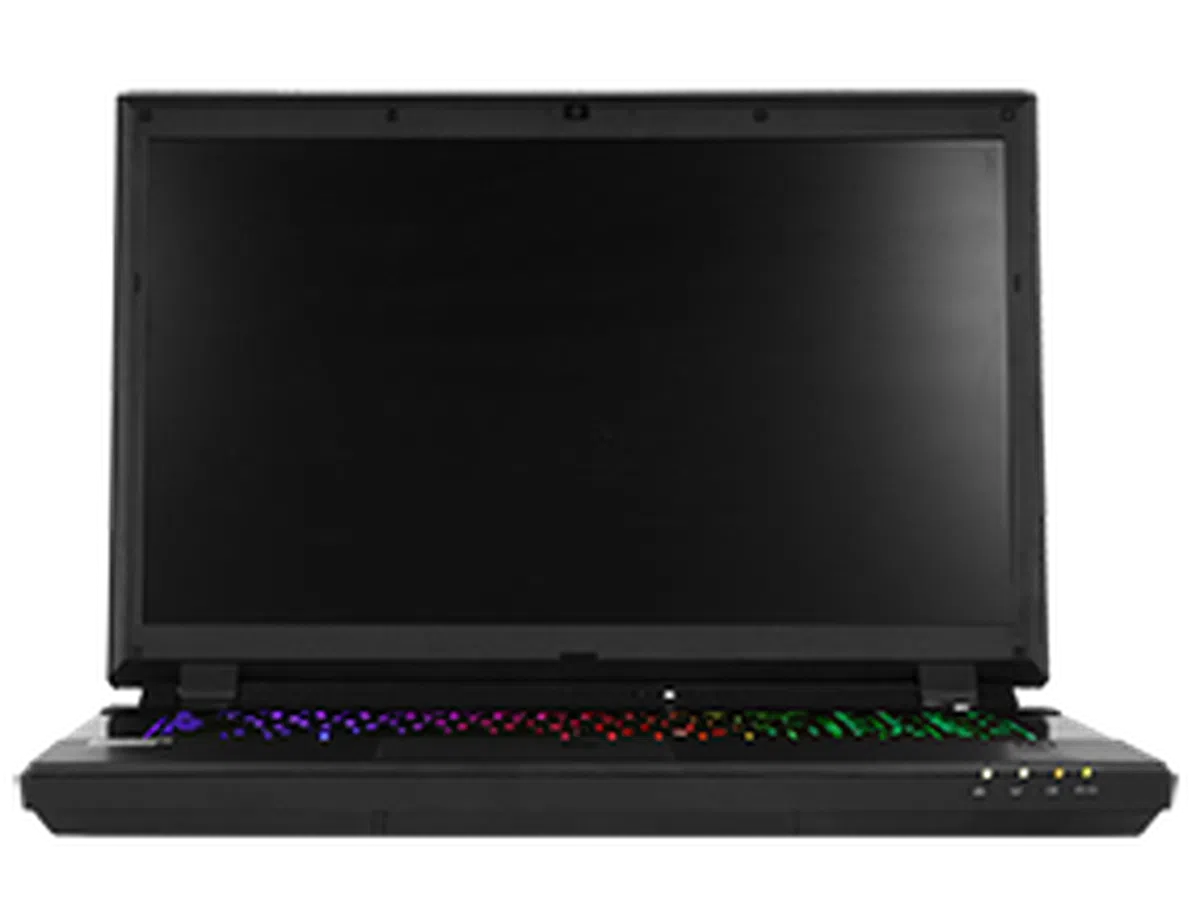 | |
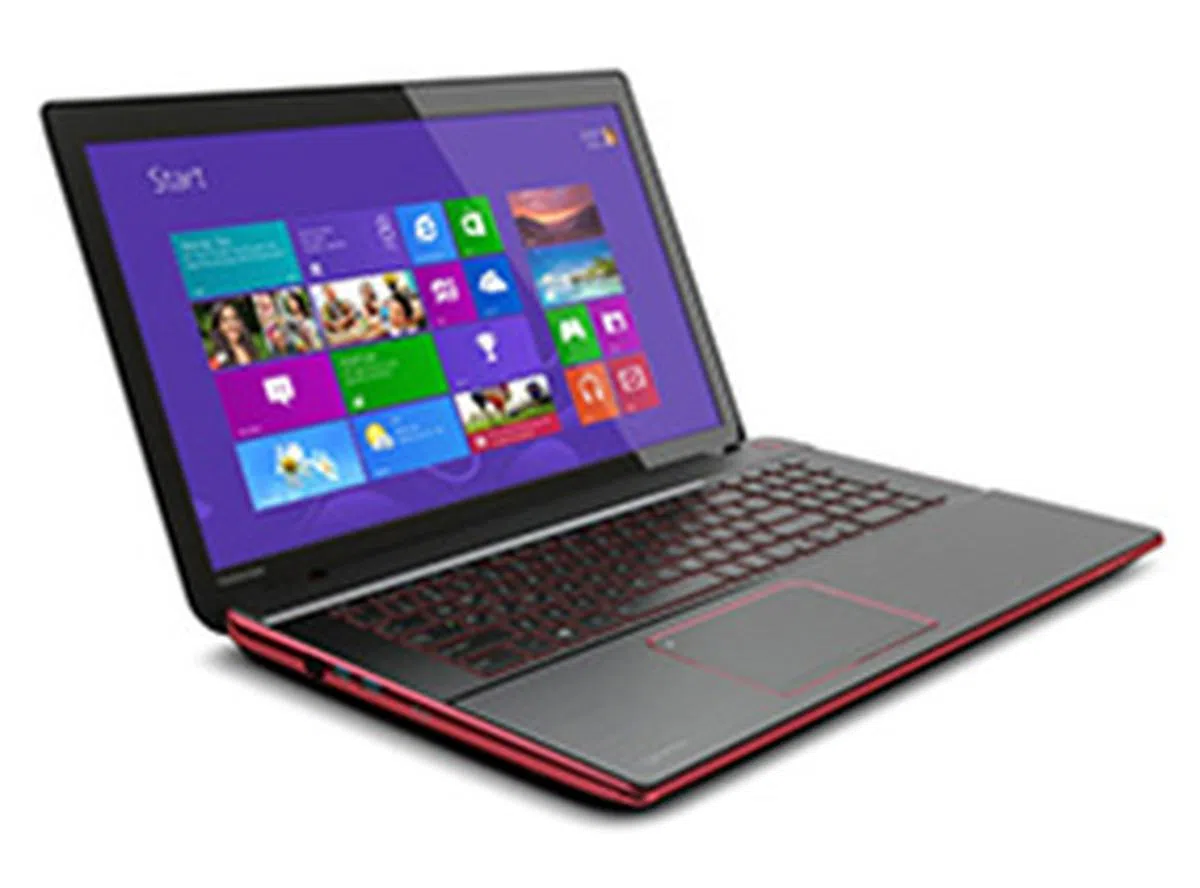 | |
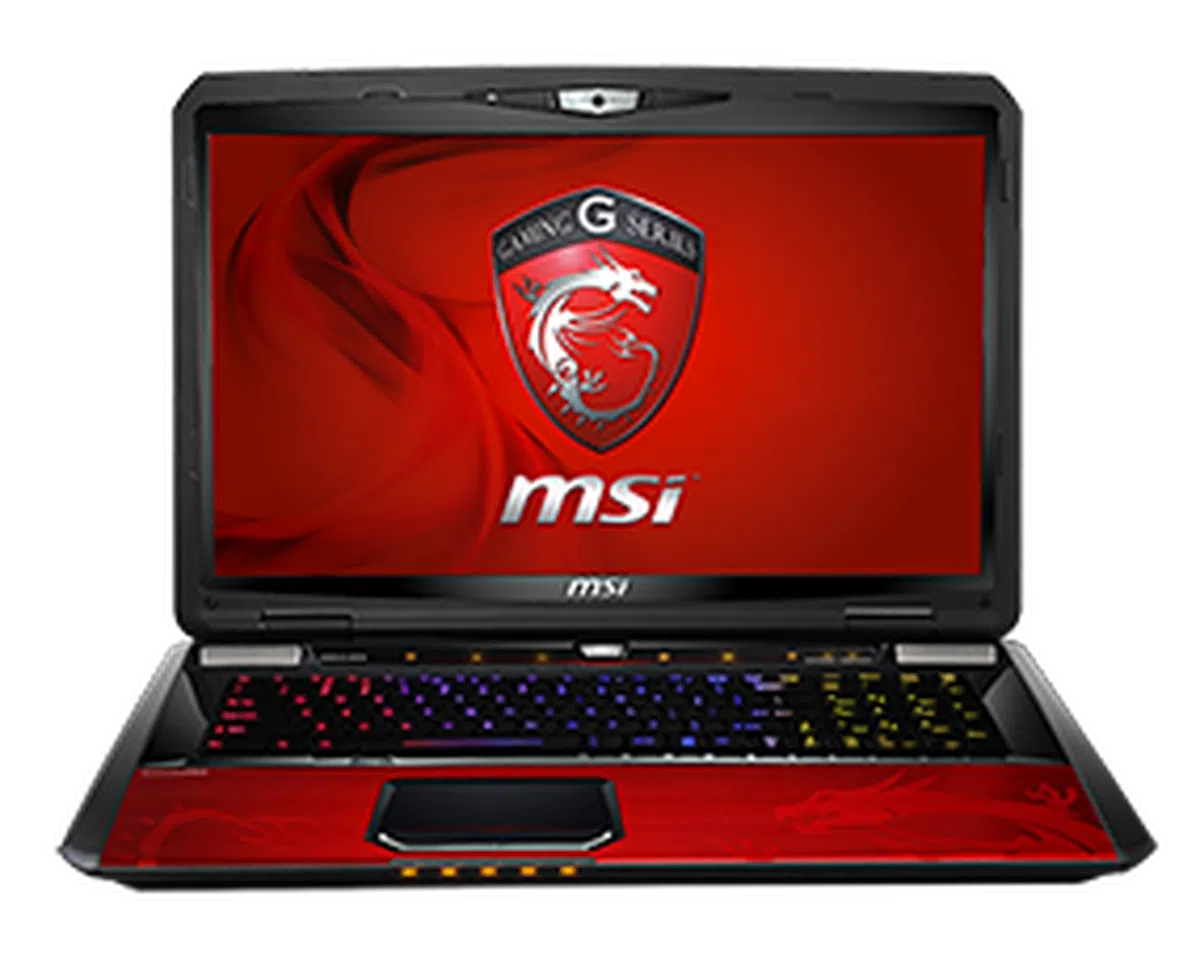 | |
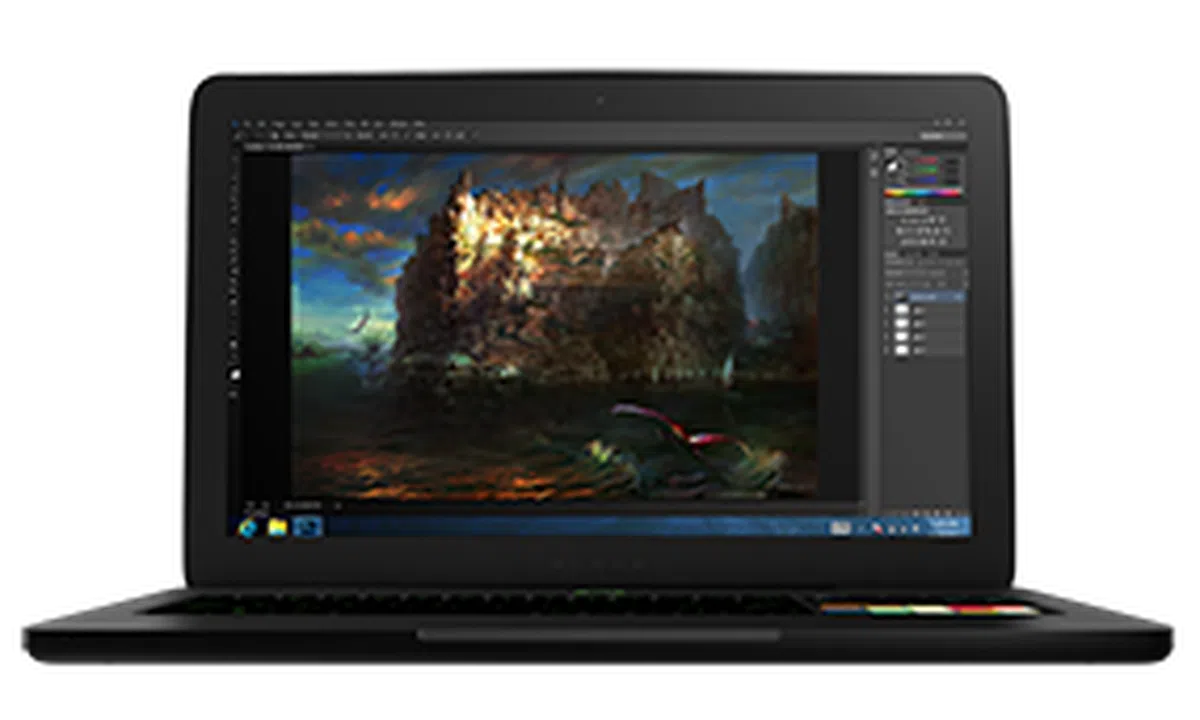 | |
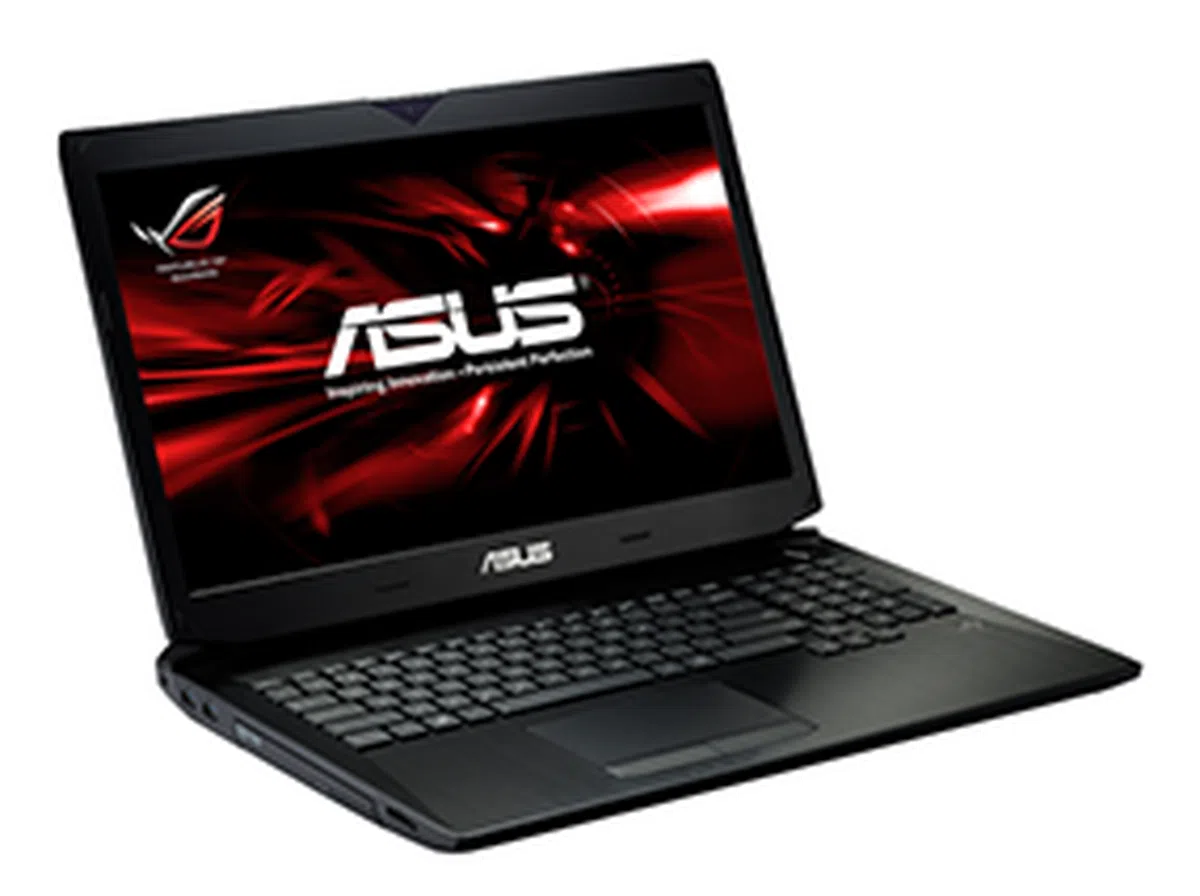 | |
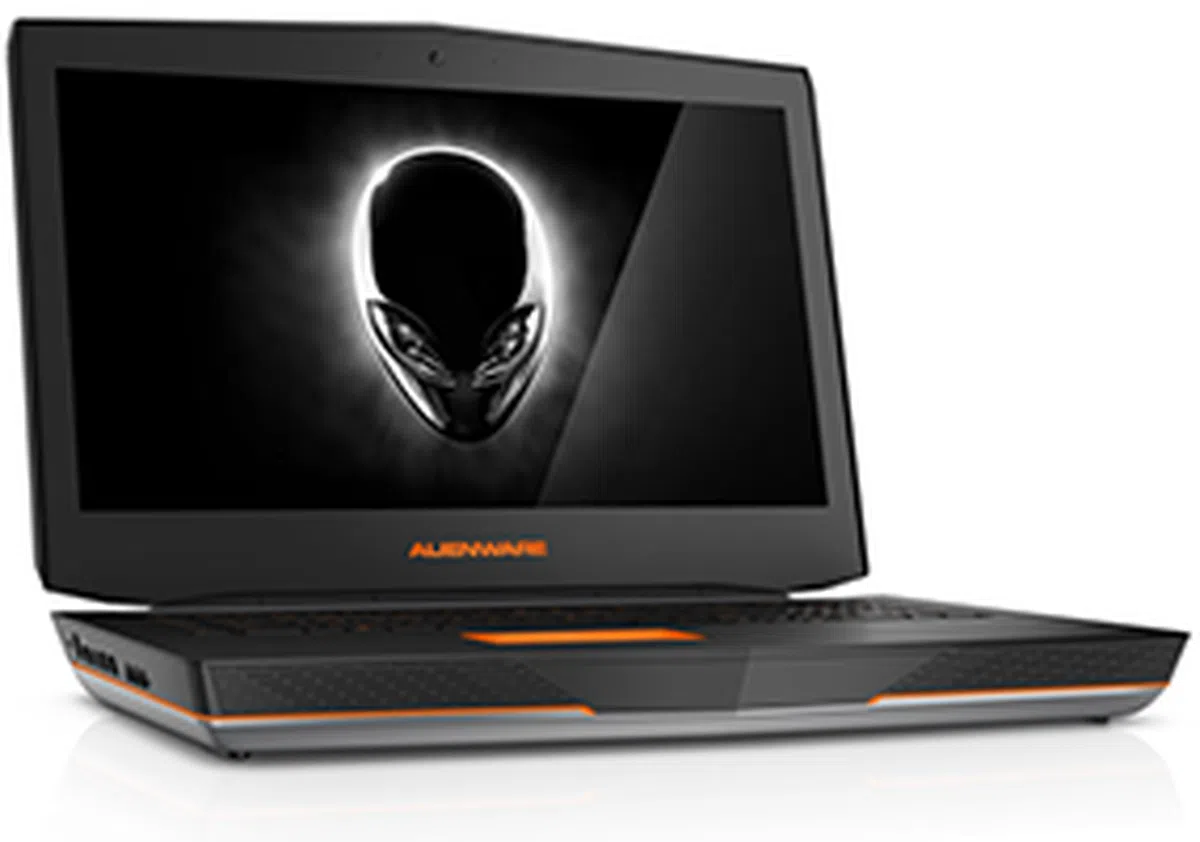 |
Our articles may contain affiliate links. If you buy through these links, we may earn a small commission.



